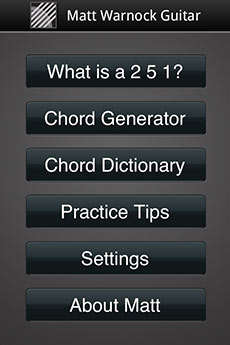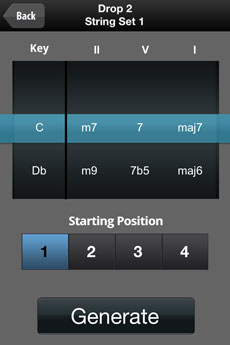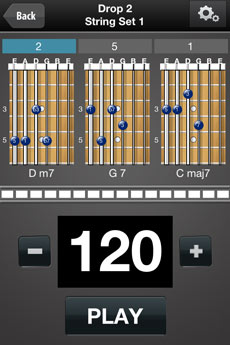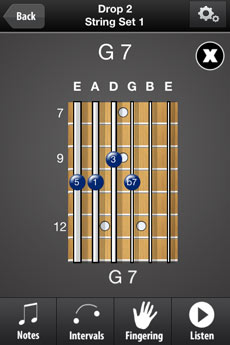If your into learning jazz guitar, and spend a lot of time looking for learning resources on the net, you’ve no doubt run into Matt Warnock’s teachings. A current lecturer at the Leeds College of Music in England, Matt has posted countless lessons, tips and tricks to his own site – mattwarnockguitar.com, as well as contributing many articles and insights across the web. And most of these resources have been posted for free.
Now Matt is bringing his teachings to the popular iOS format. His first offering is “Matt Warnock Guitar 251 Chords”. For the uninitiated, 251 is not the amount of chords in the app. Rather, it refers to the 2-5-1 chord progression. The 2, 5 and 1 being the intervals of a scale. This chord progression is extremely prevalent throughout jazz, similar to how the 1-4-5 progression is ubiquitous throughout blues and rock. And knowing the 251 in a wide variety of chord voicings and positions, in all keys, is a big part of beginning jazz guitar.

If you still don’t get exactly what a 251 chord progression is, the app itself has a section that explains it. It’s a clear explanation that even the novice should be able to understand. This part of the app also talks about common chord substitutions and gives a list of 10 popular jazz tunes that are built around the 251.

The next section of the app is the “Chord Generator”, and is the main feature. The first step is to choose the type of chords to generate. You have a choice of drop2, drop3, or drop 2 and 4 chords. Next, you simply select the key you want your 251 progression to be in, then choose any altered variations for each of the chords. Then you choose the string set you want the chords to be on, and hit the “generate” button. This takes you to a new screen with the three generated chords in standard diagram form. What’s really nice is that the chords are chosen based on voice leading. That is, all three chords require minimum finger movements to transition between them and will also create nice ascending or descending bass and melody lines. This is where the app really outshines a simple chord dictionary approach.

You can also touch any of the chords to go to a zoomed in view where you can change the diagram to show either notes, intervals or fingerings. This is great for helping to learn how chords relate to the scale and the other chords. I did find myself wishing I could page through all the variations of each chord while in this zoomed in view. Instead, if I wanted to change from say a min7 chord to a min9, I have to un-zoom the chord diagram, then click back, to go to the screen where you first chose the key and chord alterations, switch the min7 to the min9, then hit “generate” again. It’s not a deal-breaker, but it’s something that could be improved.

The app will also play the chords for you in 1 of 4 different rhythmic patterns for you to play along with. They’re voiced in that cheesy midi guitar sound which I just find annoying, though others may appreciate hearing how the chords should sound. Thankfully, you can switch them off and just use the metronome.
There is also a chord dictionary that covers most chord fingerings you should need. And there is a section of 10 practice tips, which isn’t a lot, but is a nice bonus.
The app costs $7.99, which relative to similar available apps, is a bit on the expensive side. This may be partly due to the fact, that the app is geared towards jazz guitar players, a decidedly much smaller niche then if the app was for rock players or for the general guitar audience. And being the developers still need to be paid, the higher price might be necessary. When strictly looking at the value of the info you get, I think $7.99 is pretty reasonable and would recommend it to any beginner to intermediate guitarists interested in jazz.


